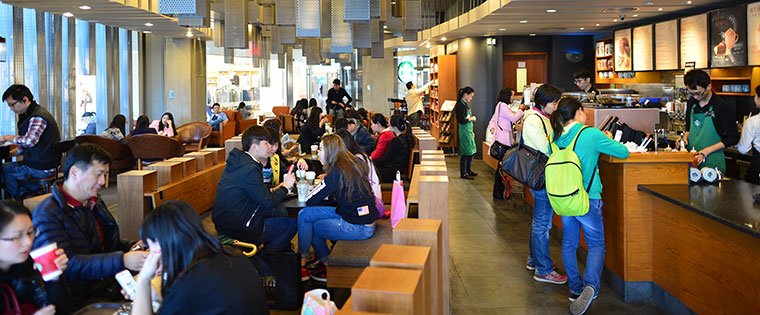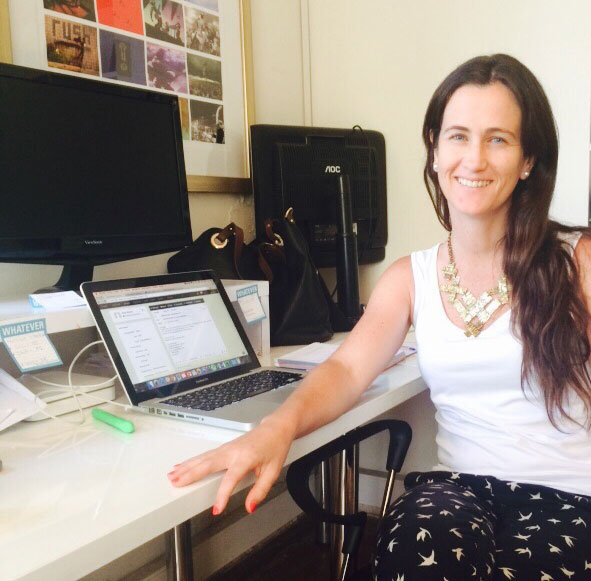
Starbucks is in the Fortune’s top ten of world’s most admired companies, and they also are included in more than 20 rankings about innovation, valuable brands, best places to work, supply chain, corporate reputation, customer loyalty, and even the coolest brands on Earth.
In other words, everyone loves Starbucks!
A remarkable achievement for a company that started back in 1971 in a small store in Seattle (Washington, US), and has become a US$ 70 billion company with 191,000 employees and more than 23,000 stores worldwide.
In fact, one of its main brand assets is the supply chain model that they created in order to nurture those 23,000 stores, maintaining prices and product quality, and being environmentally friendly. Nowadays, Starbuck’s supply chain strategy is considered a world class example of sustainability. But they didn’t start it as a perfect model. On the contrary, the company has achieved excellency like any other entrepreneur, by making mistakes and facing failures, and learning from it.
Descárgate gratuitamente este completo y práctico e-book, que desarrolla como gestionar cualquier flota de vehículos a través de todas sus actividades y factores clave.
Why Starbucks changed their supply chain strategy
Since the company began its business growth, supply chain strategy was not a priority for the company, according to Gartner’s Research Vice President Kevin Sterneckert.
Until the late 2000’s they had to deal with a struggling supply chain, “but then the economic downturn set in, forcing Starbucks to re-engineer its supply chain. In 2010, the company removed more than $700 million from its supply chain costs, and used an innovative set of metrics to achieve remarkable results,” Mr. Sterneckert explains.
At that time, the Seattle-based company had to face the recession and –for the time in its history- they saw their sales going down, which also meant the increase of supply chain costs, a very segmented operation (instead of being comprehensive), different logistics metrics inside the same process, “and a significant decline in supply chain performance,” Gartner’s VP says in Retail Technology.
“For example, the organization was scheduling store deliveries without considering its warehouse capacity, so delivery trucks would routinely leave the distribution center (DC) with less than the full order for a store,” the executive stands.
So, according to this Retail Technology analysis, Starbucks needed to face and find the solution for the following issues:
1. It lacked a supply chain strategy focused on delivering enterprise value.
2. It lacked organization calibration of benefits.
3. It lacked focus on the right supply chain metrics.
4. It needed to increase investments in talent enhancement and acquisition.
The new supply chain strategy
According to Kevin Sterneckert, the retailer transformed its supply chain strategy to move from a traditional logistics mindset to an organization purpose-built to deliver value, monitoring and adding value to every step of the production process.
“The company –he adds- wanted its supply chain to accelerate speed to market and enable sales growth. Starbucks’ management challenged the supply chain organization to compress its cost to serve and elevate its service, while obtaining, training and retaining the best talent in the business.”
In order to achieve this, the company began to implement several changes in many areas of its business model. The following ones are related to the logistics management:
A problem-solving attitude
“The company’s traditional approach led to covering problems and resolving issues with as little attention as possible. Its shift in leadership direction now focuses on highlighting problems. Employees understand that their job is to know what’s broken and what needs to be improved, changed or fixed.”
Better partnership
Starbuck’s partners were encouraged to ask for help, which is a more positive and stimulating way to gather different efforts under a common objective than share blames and responsibilities among partners.
New Metrics
They learned that too many metrics may distract logistic management from the truly important goals, so they discarded some irrelevant metrics and kept only with the essential ones.
“A key metric for Starbucks –Mr. Sterneckert explains- is ‘on time in full’ (OTIF), which the company defines as the state when everything ordered is on time and complete as ordered. This metric fell to a very low score at the apex of Starbucks’ supply chain issues. Starbucks reports OTIF to be one of the single most important indicators of cumulative success. When this number moves down, a host of additional metrics will point to the source of the supply chain’s inefficiencies. As the number rises, so do the improvements to COGS.”
Inbound Logistics
According to Supply Chain 24/7, this “refers to selecting the finest quality of coffee beans by the company appointed coffee buyers from coffee producers in Latin America, Africa and Asia. In the case of Starbucks, the green or unroasted beans are procured directly from the farms by the Starbucks buyers. These are transported to the storage sites after which the beans are roasted and packaged. These are now ready to be sent to the distribution centers few of which are company owned and some are operated by other logistics companies. The company does not outsource its procurement to ensure high quality standards right from the point of selection of coffee beans.”
Outbound Logistics
“There is very little or no presence of intermediaries in product selling. Majority of the products are sold in their own or licensed stores only. As a new venture, the company has launched a new range of single-origin coffees which will be sold through some leading retailers in the U.S.; these are Guatemala Laguna de Ayarza, Rwanda Rift Valley and Timor Mount Ramelau,” Supply Chain 24/7 adds.
Procurement
An important part of its supply chain lies on the permanent and mutual trust between the company and its suppliers. “Starbucks agents travel to Asia, Latin America and Africa –Supply Chain 24/7 explains- for the procurement of high grade raw material to bring the finest coffee to its customers. The agents establish strategic relationship and partnership with a supplier which is built up after reconnaissance and communication about the company standards. High quality standards are maintained with direct involvement of the company right from the base level of selecting the finest raw material which is coffee beans in case of Starbucks.”
The results of these and other improvements has strengthened the brand, the loyalty of their costumers and even the hapinees of their employees, as shown in the following video that explains the value that holds their supply chain:
Interesting case of how a company can solve problems throughout a smart and sustainable supply chain strategy. What do you think?
 Writen by Francisca Howard
Writen by Francisca Howard



